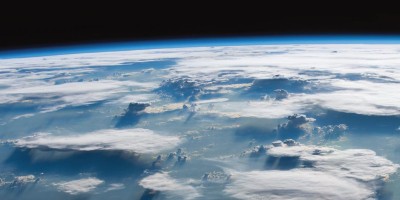

Data availability
Temperature-sensitive Common Era proxy records from the PAGES2k project12 were taken from the current data version available from the National Climatic Data Center website on 22 Jan 2020 (www1.ncdc.noaa.gov/pub/data/paleo/pages2k/pages2k-temperature-v2-2017/). Only low-resolution oceanic data (‘O2kLR’) covering most of the Common Era in the study area were used. Numerical codes for the circulation model from ref. 11 are available for download from G.G.’s website (https://www2.whoi.edu/staff/ggebbie/). Total solar irradiance during the Holocene from ref. 5 was downloaded from the National Climatic Data Center server on 3 Feb 2020 (https://www.ncei.noaa.gov/pub/data/paleo/climate_forcing/solar_variability/steinhilber2009tsi.txt). The estimates of volcanic aerosol forcing from ref. 6 are as provided in the online version of the paper as of 3 Feb 2020 (https://doi.org/10.1038/nature14565). The tide-gauge sea-level data were extracted from the Permanent Service for Mean Sea Level database13 on 24 Feb 2020 (https://www.psmsl.org/data/obtaining/). Source data are provided with this paper.
References
Kemp, A. C. et al. Paleo constraints on future sea-level rise. Curr. Clim. Change Rep. 1, 205–215 (2015).
Kench, P. S. et al. Climate-forced sea-level lowstands in the Indian Ocean during the last two millennia. Nat. Geosci. 13, 61–64 (2020).
Kemp, A. C. et al. Climate related sea-level variations over the past two millennia. Proc. Natl Acad. Sci. USA 108, 11017–11022 (2011).
Kopp, R. E. et al. Temperature-driven global sea-level variability in the Common Era. Proc. Natl Acad. Sci. USA 113, E1434–E1441 (2016).
Steinhilber, F. et al. Total solar irradiance during the Holocene. Geophys. Res. Lett. 36, L19704 (2009).
Sigl, M. et al. Timing and climate forcing of volcanic eruptions for the past 2,500 years. Nature 523, 543–549 (2015).
Church, J. A. et al. Significant decadal-scale impact of volcanic eruptions on sea level and ocean heat content. Nature 438, 74–77 (2005).
Gleckler, P. J. et al. Krakatoa lives: the effect of volcanic eruptions on ocean heat content and thermal expansion. Geophys. Res. Lett. 33, L17702 (2006).
Zanna, L. et al. Global reconstruction of historical ocean heat storage and transport. Proc. Natl Acad. Sci. USA 116, 1126–1131 (2019).
Gebbie, G. & Huybers, P. The Little Ice Age and 20th-century deep Pacific cooling. Science 363, 70–74 (2019).
Gebbie, G. & Huybers, P. The mean age of ocean waters inferred from radiocarbon observations: sensitivity to surface sources and accounting for mixing histories. J. Phys. Oceanogr. 42, 291–305 (2012).
Emile-Geay, J. et al. A global multiproxy database for temperature reconstructions of the Common Era. Sci. Data 4, 170088 (2017).
Holgate, S. J. et al. New data systems and products at the permanent service for mean sea level. J. Coast. Res. 29, 493–504 (2013).
Tamisiea, M. E. & Mitrovica, J. X. The moving boundaries of sea level change: understanding the origins of geographic variability. Oceanography 24, 24–39 (2011).
Acknowledgements
C.G.P. acknowledges support from NSF grant OCE-2002485, the Andrew W. Mellon Foundation Endowed Fund for Innovative Research and the Joint Initiative Awards Fund from the Andrew W. Mellon Foundation at the Woods Hole Oceanographic Institution. G.G. acknowledges support from NSF grant OCE-1760958. A.J.M. acknowledges support from the National Research Foundation Singapore and the Singapore Ministry of Education under the Research Centres of Excellence initiative, and also from the National Research Foundation Singapore under its NRF Fellowship scheme (Award NRF-NRFF11-2019-0008). We thank P. Kench for helpful conversations on an earlier version of the manuscript.
Author information
Authors and Affiliations
Contributions
C.G.P., A.C.K. and G.G. conceived the study. All of the authors designed methods and analysed data. C.G.P. wrote the manuscript with input from A.C.K., G.G. and A.J.M.
Corresponding author
Ethics declarations
Competing interests
The authors declare no competing interests.
Additional information
Peer review information Nature Geoscience thanks Anthony Purcell and Alex Thomas for their contribution to the peer review of this work. Primary Handling Editor: James Super.
Publisher’s note Springer Nature remains neutral with regard to jurisdictional claims in published maps and institutional affiliations.
Supplementary information
Supplementary Information
Supplementary Discussion, Figs. 1–5, and Table 1.
Supplementary Data 1
Supplementary Data relating to Fig. 1 and Supplementary Fig. 2.
Rights and permissions
About this article
Cite this article
Piecuch, C.G., Kemp, A.C., Gebbie, G. et al. Climate did not drive Common Era Maldivian sea-level lowstands. Nat. Geosci. 14, 273–275 (2021). https://doi.org/10.1038/s41561-021-00731-2
Received:
Accepted:
Published:
Issue Date:
DOI: https://doi.org/10.1038/s41561-021-00731-2
- Springer Nature Limited
This article is cited by
-
Reply to: Climate did not drive Common Era Maldivian sea-level lowstands
Nature Geoscience (2021)


